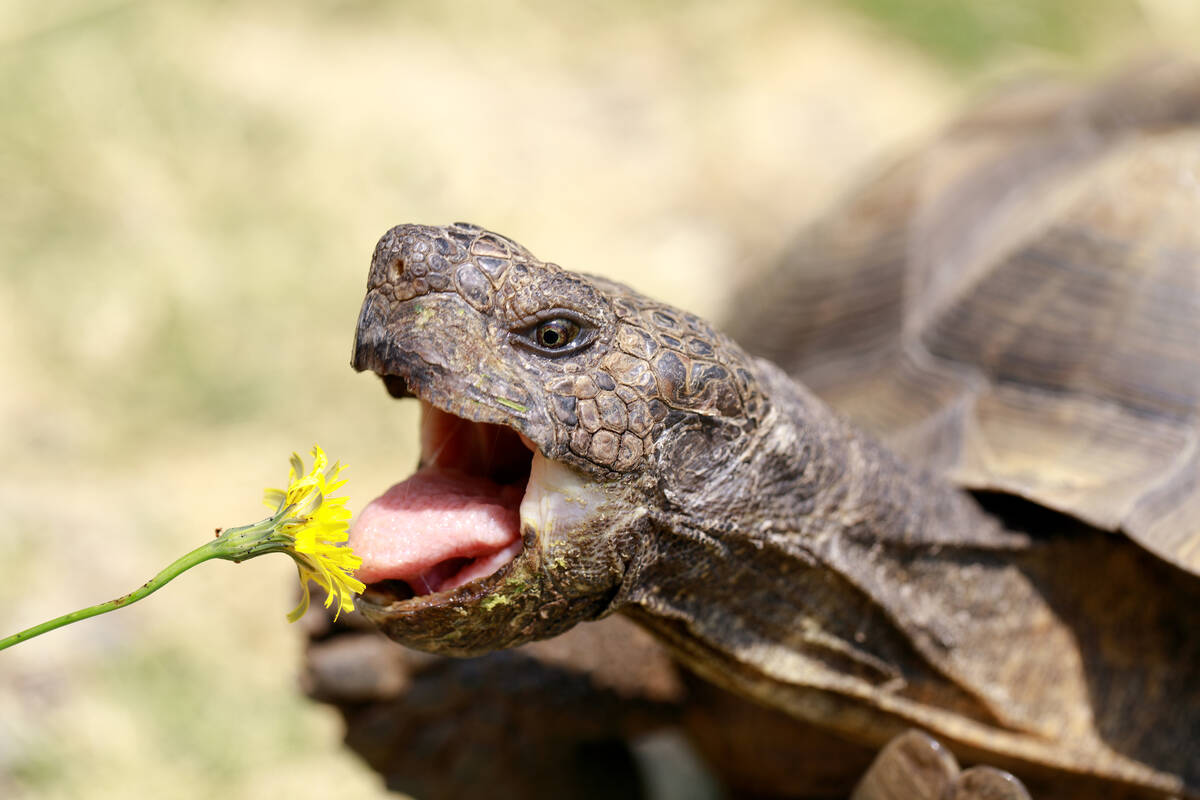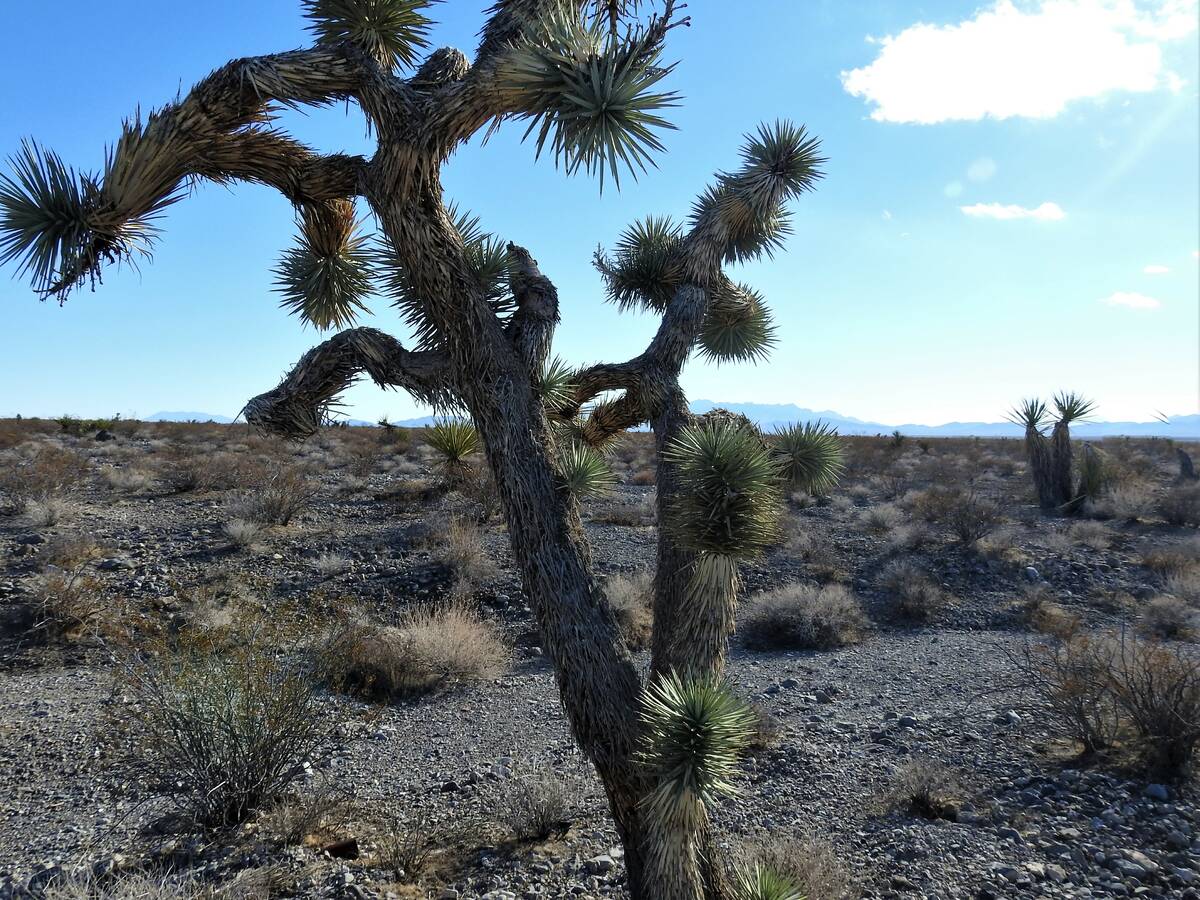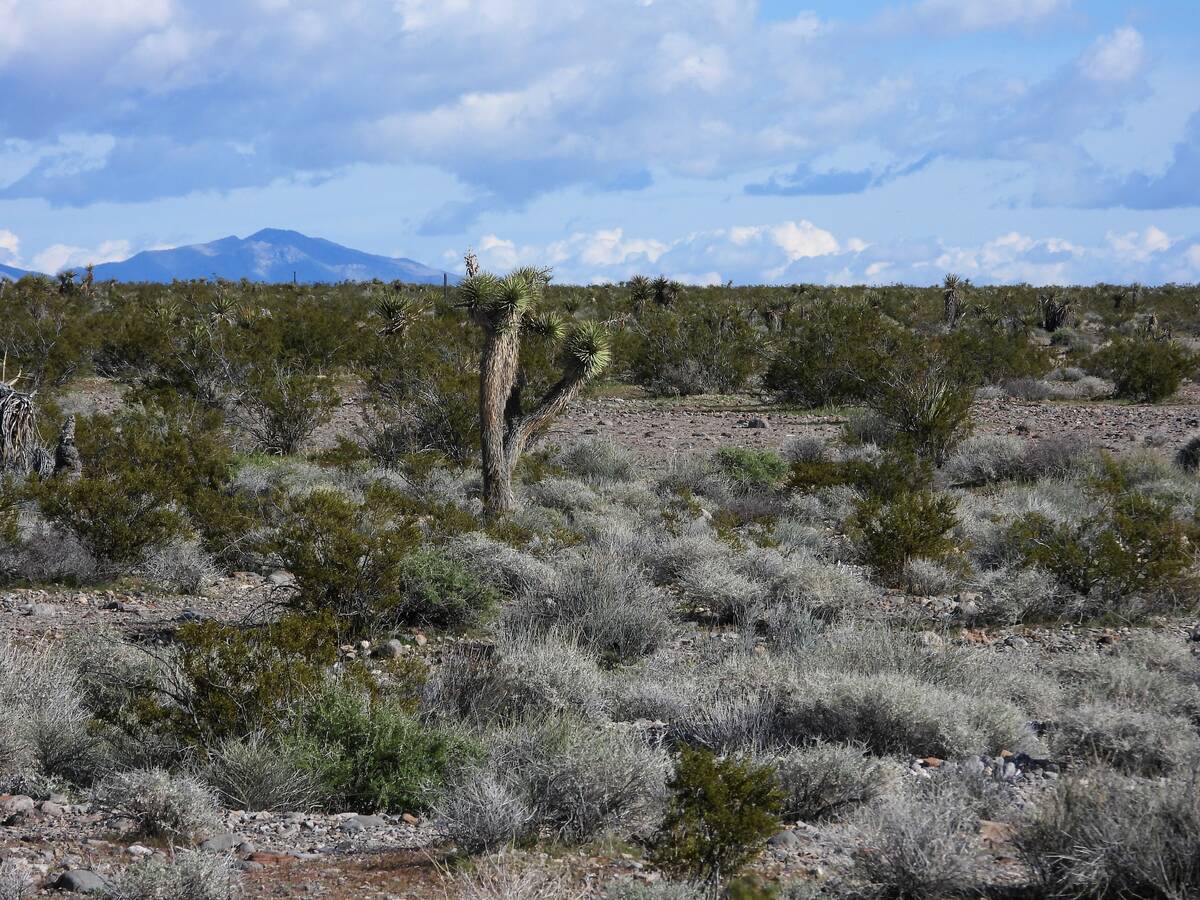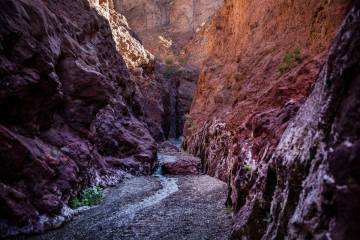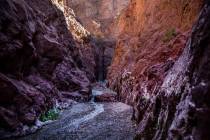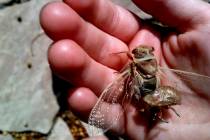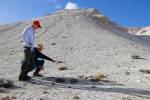Desert tortoise imperiled by solar project, environmentalists say
The desert tortoise is king in the Mojave. But a coalition of environmentalists says one solar project poses an unacceptable threat to the habitat of the iconic animal, listed as threatened under the Endangered Species Act.
In a rare move Monday, environmental watchdog Basin and Range Watch joined other groups in writing a letter to the U.S. Department of the Interior to cancel the environmental permitting process one solar project is making its way through. The Rough Hat Clark County Solar Project would occupy about 2,430 acres of public land roughly 38 miles west of Las Vegas.
The group of scientists and advocates has put out a Change.org petition with 790 signatures and counting. Though it’s uncertain whether the letter or the petition will kill the project, advocates also have secured meetings with the Bureau of Land Management and the Fish and Wildlife Service to discuss their perspective.
“We’re sending a message from the environmental community to BLM that they really need to take a step back,” said Edward LaRue, a member of the Desert Tortoise Council who signed the letter. “This and a number of other solar projects are really excessive in terms of what the tortoise population can stand.”
John Asselin, BLM’s Southern Nevada spokesman, declined to comment on the letter or the status of the project, and Candela Renewables, the California-based company proposing it, didn’t respond to requests for comment.
Solar company: Move tortoises away
Land managers have said all of the acreage that would be fenced off for solar would be lost habitat for the desert tortoise, of which there are an estimated 114 in the area.
At a public meeting last month, a BLM project manager noted a potential alternative where habitat loss would be temporary.
The tortoises in the project area would be relocated to an area known as Stump Springs. In the past, tortoises haven’t shown that they are receptive to changes in their surroundings and often die because of attacks from other animals or out of pure stress.
They are commonly kept as legal pets in Nevada, though people are considered “custodians” of a wild animal rather than a pet owner, according to the Fish and Wildlife Service. The Tortoise Group, the only group authorized to facilitate tortoise adoptions in Southern Nevada, estimates that about 150,000 are in captivity in Clark County.
As politicians tout the need for more green energy projects on public lands, conservationists worry that the once-abundant desert tortoise could be a casualty of the green energy transition.
“It just seems like the entire valley has been targeted for solar development,” LaRue said. “It’s our public land, but it also belongs to the tortoise.”
Kevin Emmerich, a leader of the coalition and co-founder of Basin and Range Watch, said that aside from the wildlife issue, he’s concerned about the water supply of the already strained Pahrump Valley basin.
The basin has the highest density of wells that residents rely on for drinking water and is one of the most over-appropriated in Nevada, which means there are more water rights distributed on paper than there is water in the ground.
“It’s a multi-faceted cluster of impacts,” Emmerich said.
The letter could amount to only a symbolic move. But should the project continue along the permitting process, interested residents have until April 11 to submit comments about the draft environmental impact statement before the BLM begins the process to issue a final one.
Contact Alan at ahalaly@reviewjournal.com. Follow @AlanHalaly on X.



